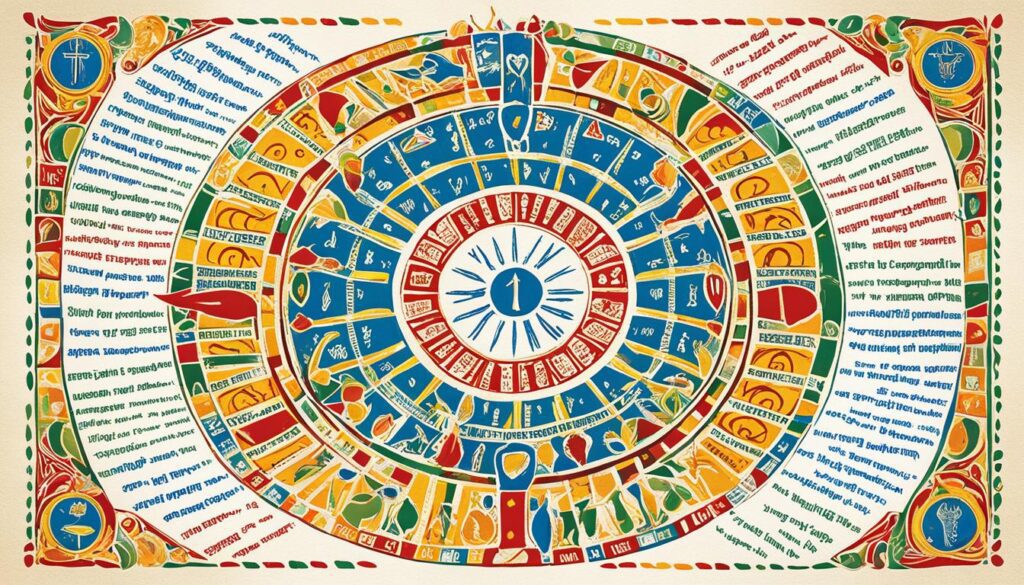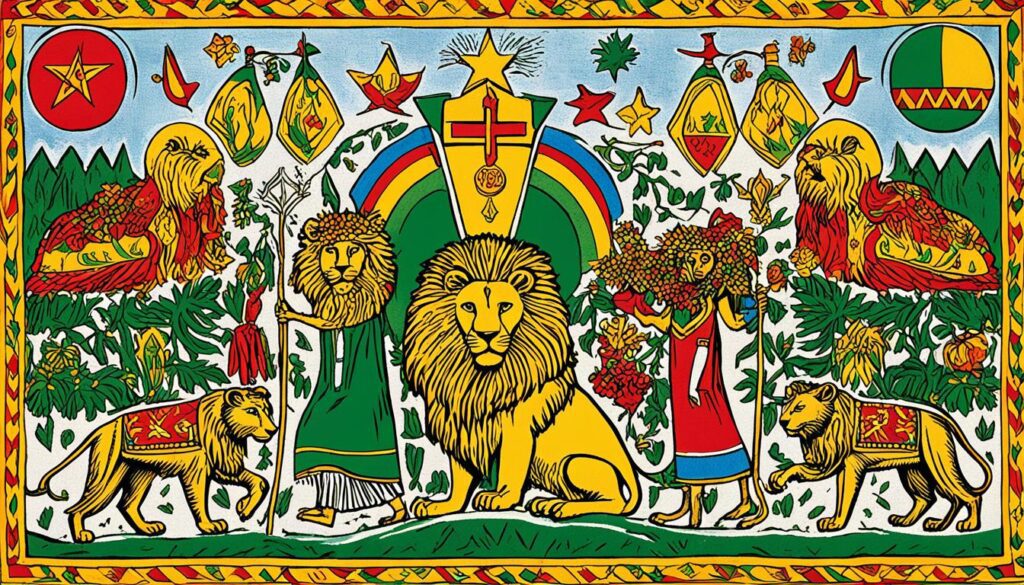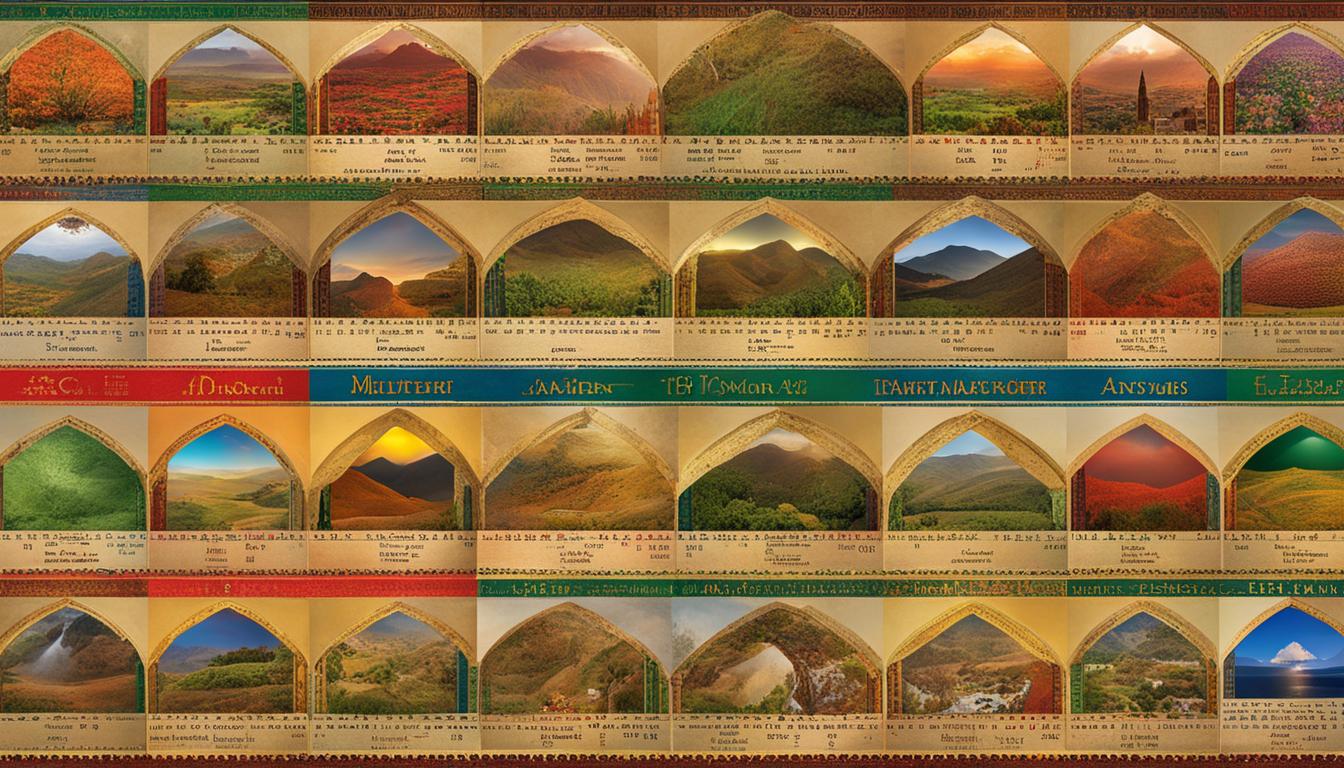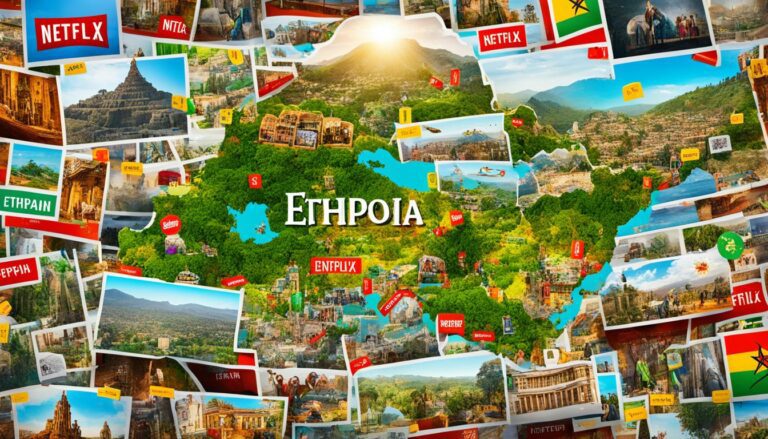How Many Months in a Year in Ethiopia?
Did you know that Ethiopia follows its own calendar system, which is different from the Gregorian calendar used by much of the world? This unique calendar has a surprising number of months, offering a distinct perspective on timekeeping.
Key Takeaways:
- The Ethiopian calendar consists of 12 months of 30 days each, with an additional five or six days added at the end of the year.
- It is based on the Ge’ez Calendar and is followed by Ethiopian Christians.
- The calendar has historical significance, reflecting Ethiopia’s independent identity and ties to Emperor Haile Selassie.
- The Ethiopian calendar has influenced cultural movements such as Rastafari and music icon Bob Marley.
- It continues to shape the perception and measurement of time in Ethiopia.
The Ethiopian Calendar: A Unique Calculation of Time
The Ethiopian calendar, also known as the Ge’ez Calendar, is the official calendar of Ethiopia. It is used for both civil and ecclesiastical purposes and is followed by Ethiopian Christians belonging to the Orthodox Tewahedo Churches, Eastern Catholic Churches, and Eastern Protestant Christian Churches.
The calendar is based on the Coptic calendar and adds a leap day every four years, similar to the Julian calendar. The Ethiopian year begins on 11 or 12 September in the Julian calendar and has twelve months, each consisting of 30 days. Additionally, the calendar includes five or six epagomenal days, which form a thirteenth month.
The Ethiopian calendar system provides a unique way of measuring time, reflecting Ethiopia’s rich cultural heritage and independent identity. It showcases the country’s historical significance and the influence of the calendar on religious and cultural practices.
| Month | Number of Days |
|---|---|
| Mäskäräm | 30 |
| T’əqəmt | 30 |
| Hədar | 30 |
| T’ərr | 30 |
| Yäkatit | 30 |
| Mäggəbət | 30 |
| Miyazya | 30 |
| Gənbo | 30 |
| Sənə | 30 |
| Hämər | 30 |
| Nähase | 30 |
| Ṭəqəmt | 30 |
Historical Significance of the Ethiopian Calendar

The Ethiopian calendar holds significant historical and cultural importance. Ethiopia, a country that was never colonized by a European power, takes pride in its independent identity, which is reflected in its unique calendar system. One prominent figure associated with Ethiopian history is Emperor Haile Selassie, who ruled Ethiopia from 1930 to 1974. Selassie played a pivotal role in promoting African unity and independence, making him a revered figure in the country and beyond.
“Emperor Haile Selassie, also known as the Lion of Judah, remains an influential icon in Ethiopian history and continues to inspire people through his legacy of leadership and resistance against oppression.”
Moreover, the Ethiopian calendar has deep-rooted connections to religious beliefs. The Ark of the Covenant, believed to be housed in the city of Aksum, holds immense religious significance for Orthodox Christians in Ethiopia. It represents the covenant between God and the Israelites and acts as a symbol of divine presence and protection. The Ethiopian calendar further amplifies the cultural and religious affinities that shape the traditions and practices of Ethiopian society.
| Ethiopia Calendar Months | Ethiopia Year Months | Ethiopian Months Concept |
|---|---|---|
| 1. Meskerem | 7 – 8 Years behind Gregorian calendar | Reflects Independent Identity |
| 2. Tikimt | 12 Months of 30 Days Each | Promoting African Unity and Independence |
| 3. Hidar | 13th Month (Epagomenal Days) | Deep-Rooted Religious Beliefs |
| 4. Tahsas | – | Cultural and Historical Significance |
| 5. Tir | – | Religious Beliefs and Traditions |
| 6. Yekatit | – | – |
| 7. Megabit | – | – |
| 8. Miazia | – | – |
| 9. Ginbot | – | – |
| 10. Sene | – | – |
| 11. Hamle | – | – |
| 12. Nehase | – | – |
Cultural Influences of the Ethiopian Calendar

The Ethiopian calendar has had a profound impact on culture and society, both within Ethiopia and around the world. One notable cultural influence of the Ethiopian calendar is its connection to the Rastafari movement, which originated in Jamaica.
The Rastafari movement reveres Emperor Haile Selassie, who is considered a divine figure and a symbol of African unity. Selassie’s connection to the Ethiopian calendar plays a significant role in Rastafarian beliefs and practices. The movement draws inspiration from the calendar’s unique structure and the historical and cultural significance it holds within Ethiopia.
“The Ethiopian calendar is a symbol of our African heritage and our spirituality. It represents a timekeeping system that aligns us with our ancestors and our roots.”
Reggae legend Bob Marley, one of the most influential figures in spreading the Rastafari message, often referenced Emperor Haile Selassie and his connection to the Ethiopian calendar in his music. Marley’s songs contained powerful messages of peace, equality, and social justice, which resonated with people worldwide, spreading the influence of the Ethiopian calendar beyond Ethiopia’s borders.
Beyond its impact on religious and musical movements, the Ethiopian calendar has also shaped the way time is perceived and measured in the country. In Ethiopia, the day is divided into two 12-hour slots, starting from 06:00. This unique division of time has become a fundamental part of daily life in Ethiopia and underscores the deep-rooted influence of the Ethiopian calendar on the cultural fabric of the nation.
The cultural influences of the Ethiopian calendar extend far beyond its timekeeping function. This unique calendar system has become intertwined with expressions of spirituality, social movements, and everyday life, making it an integral part of Ethiopia’s identity and cultural heritage.
Conclusion
The Ethiopian calendar is a captivating system that distinguishes Ethiopia from the rest of the world when it comes to measuring time. With its 12 months of 30 days each and the inclusion of a thirteenth month, this calendar offers a unique perspective on the passage of time. It not only showcases Ethiopia’s rich cultural heritage but also highlights its historical significance, from its steadfast resistance to European colonization to the profound impact of the calendar on religious movements like Rastafari.
As Ethiopians celebrate the start of a new year, they continue to embrace and preserve their distinct calendar system, which has played an integral role in shaping the country’s culture for centuries. The Ethiopian calendar serves as a testament to Ethiopia’s independence and identity, as it differs from the widely used Gregorian calendar. Furthermore, it is deeply intertwined with the country’s religious customs and beliefs, particularly within the Orthodox Tewahedo Churches, Eastern Catholic Churches, and Eastern Protestant Christian Churches.
In addition to its historical and cultural importance, the Ethiopian calendar has had a significant impact on daily life in Ethiopia. The unique division of the day into two 12-hour slots, starting from 06:00, has become deeply ingrained in the way time is perceived and measured by Ethiopians. The calendar not only structures their daily activities but also shapes their outlook on life, reflecting the rich tapestry of Ethiopian traditions and customs.






